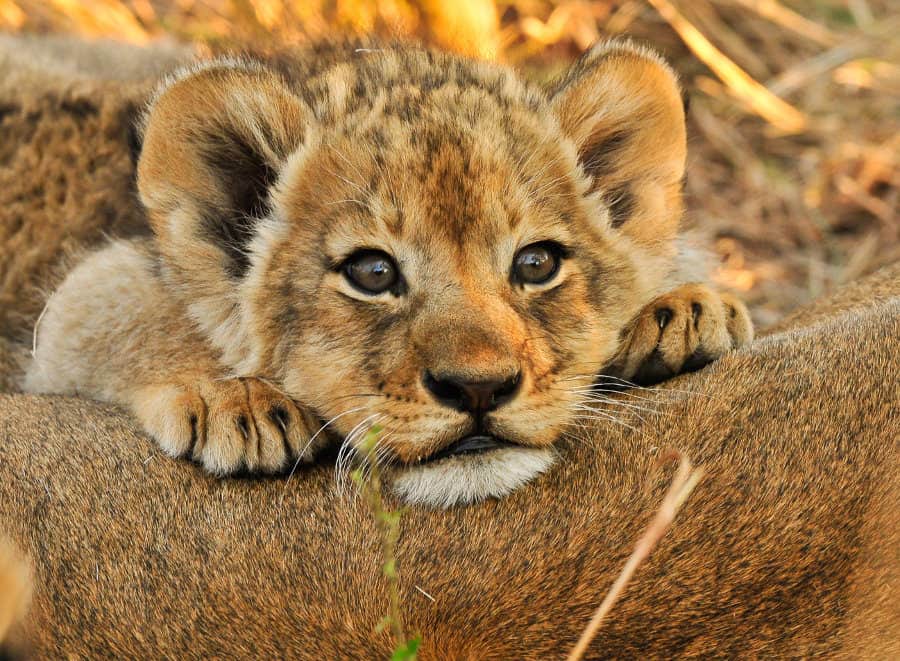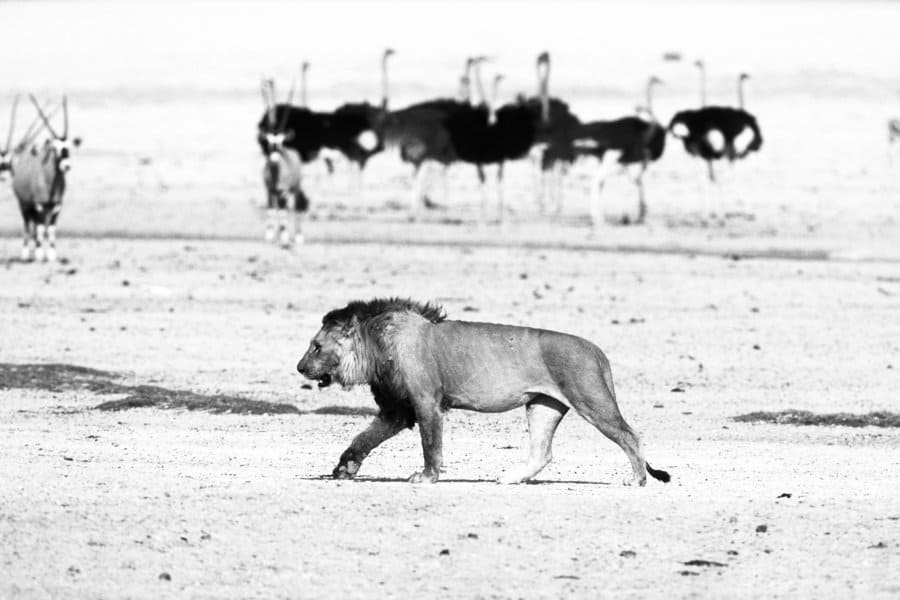I have said it many times, tracking lions on foot is something I love to do. I love the challenge of it and the reward of seeing these amazing animals on foot is great.
I recently did my first lion tracking in Zambezi National Park. Although I have been a professional guide for ten years and lived in Victoria Falls for twenty, I have only just begun to operate as Julian Brookstein Safaris here.
I picked up my guests from Batonka Lodge at five forty five and we were driving into the park by just after six. I passed another guide not far in who told me that he had seen lions at number 11 picnic site the previous evening, which I kept in mind.
We were still far to go to number 11 as we had just entered the park. Getting in early to the park, I have noticed a few times that a pride of lions likes coming to drink at a particular spot down a drainage line. I have seen the tracks enough there now to know they do it often.
As we approach the spot I can see that another vehicle is already there from one of the lodges within the park, with the guide out the vehicle, looking at tracks. I jump out and we chat briefly and look at the tracks.
The cats have been there, 6-8 of them it looks like. The other guide tells me he is going to drive on and keep looking.
I continue to look at the tracks for a bit as he departs. After casting about for a while I see the direction the lions have moved off in. I make my way back to the vehicle and tell my guests, it’s time to walk.
As always, first a safety brief, in this case with more focus on how we must behave when tracking. The two words I always bring up are patience and perseverance. You need to be patient with the tracker as it’s not easy and takes time.
Persevere, as often when you have been tracking for a while you can start to think that you will never find the animal. This normally is when you are getting close!
We head off. I always tell my guests when walking that we walk in silence, unless you want to ask me a question or need to tell me something. Then we can stop, talk about it quietly and then continue in silence.
It is very important for me to be able to listen when walking, as so much is gained from being quiet in the bush. At first the tracking is easy, soft powdery sand, all the lions walking in a group.
They follow the drainage line for a couple hundred metres, then go up the bank. We follow up along the ridge, making good progress.
An interesting fact about the Zambezi National Park is that it has an old mine field within its boundaries. This area has been de-mined and is pretty clearly demarcated.
Even though by now thousands of buffalo and elephant have traversed the area for many years, for obvious reasons I choose not to walk there.
The lions we are following are now heading for this area and I am thinking we are going to have to stop tracking. As we get closer to the demarcated line the ground gets quite rocky and hard. This always makes tracking hard, our pace slows as I keep stopping the guests whilst I cast around to find the next spoor.
After a period of working through the rocky area we reach the line that demarcates the old mine field. The tracks now turn sharply and we follow for a couple hundred metres parallel to the line within a few metres of it.
When we come to the end of the demarcated line it hooks to the left to signal the end of the mine field. The lion tracks turn left and continue along the line for another hundred metres, before moving away to another drainage line.
The way the lions walked “around” the old mine field was interesting. Basically they did it exactly as if you or I needed to walk to get where the lions ended up but knew we could not cross the old mine field. If the lions had walked straight across the mine field it would have been much quicker and shorter.

Once we had left the mine field behind us, the tracks soon moved back to the same drainage line and now we see signs that the lions had lain down in a couple of spots. This is usually a good sign because it shows they are thinking about stopping to rest.
By this point we had been on the tracks about one and a half hours and covered around 3 km in a straight line. We were at a place where I had stopped to find spoor again and then called my guests forward to continue, when I heard it – that soft contact call that lions make when talking to each other.
I stopped to listen, pointing in the direction I had heard the call from. We all stood motionless, but nothing. Did I hear it? We continue forward.
We go about a hundred metres more and come to a big bend in the drainage line. There is a steep bank on the left side and a gradual slope on the right, around the corner with thick vegetation and good shade.
When you are tracking, the more you do it, the better you get at it, same as anything really. As you track you always look up ahead and you see spots that you think, that’s a good spot to lie up. This was one of those spots.
We move forward very slowly, I signal to my guests that I want them closer to me and that everyone should scan hard. When in these spots you literally move forward a step at a time, stoping to listen and look, all senses on high alert.
Another step, then I see movement up to my right on the higher ground. I lift my binos, it’s a subadult lion, maybe eight months old about twenty five metres away.
It’s looking straight at me. I quickly pull the guest behind me closer and point where he must look, as majority of the times you find lions on foot, they run away as soon as they see you so you have to be quick getting eyes on them or they vanish.
A second later a lioness rises up next to the subadult. She must have been lying flat next to him, suddenly wondering what he was staring at so intently.
She starts rumbling as soon as she sees us. She has everyone’s attention immediately and there is no need to point her out. She lunges forward with a grunt and the rumbling gets louder.
I quickly say “DON’T MOVE”, we stand for a tense second. Then without taking my eyes off her I tell my guests to be calm and slowly move back, looking where they step. They move slowly and I take a step back slowly.
The lioness is rumbling all the while and she makes one more short dart forward to make her point. I tell everyone to stop.
In my experience when in this kind of situation, obviously it is important to not antagonise the lion and push it. It is clearly telling you, you are in my personal space and you are not welcome. So we should move back and give space until the cat calms down.
However, I believe you should move when the cat is not moving. It shows in a way that we are moving because we choose to and not because you are moving us. This is my personal feeling with all the experience I have gained.
We slowly move again and she is visibly relaxing with every step we take. With the angle of the higher ground the lioness was on, we are soon out of her sight and all goes quiet.
We keep moving back and I take us in a big arc round to the higher ground to see if we can get another glimpse of them. We don’t see them again. Whilst we had moved back they had all trotted off in the opposite direction.
I turn and ask my guests if they thought we would find them – a very nervous laugh follows from one of them and “No!”
The Zambezi National Park truly is a gem and I am so happy to be operating in it now, as it really is going from strength to strength.
After this we drove on down the river road to have our breakfast and went on to see giraffe, waterbuck, numerous elephant, buffalo, impala, kudu and brilliant birds. This was all experienced in four hours within 20 km of Vic Falls town!
—
Julian Brookstein Safaris is now live in Zambezi National Park and across Zimbabwe. Get in touch to connect with your wild side.



